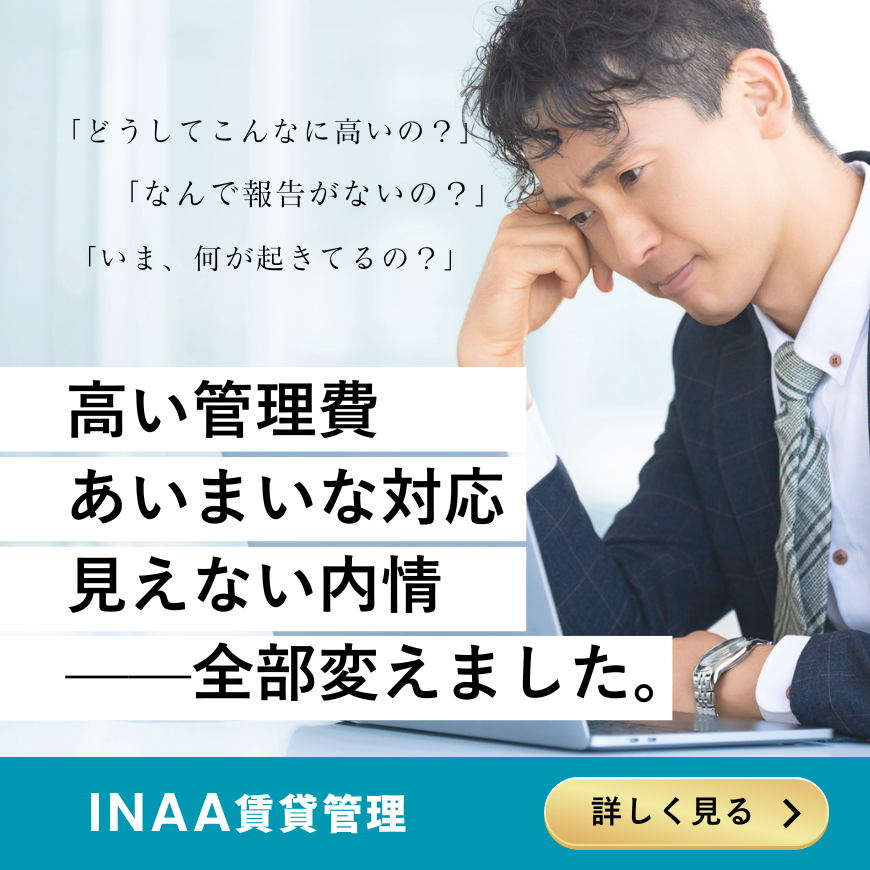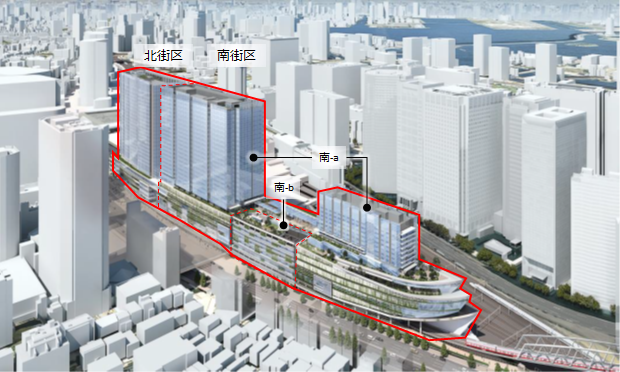In April 2022, the “Management Plan Certification System” was launched to provide official recognition of the management status of condominiums. Under this system, condominium management associations can obtain certification (i.e., “certified management plan condominiums”) from local governments if their management plans meet certain standards. By making management status transparent and providing information to the market, this system is expected to have a significant impact on the asset value and circulation of used condominiums.
Overview and Purpose of the Management Plan Certification System
Overview of the Management Plan Certification System: The Apartment Management Plan Certification System is a mechanism whereby apartment management plans that meet certain criteria established by the Ministry of Land, Infrastructure, Transport and Tourism can be officially certified by local governments. It was established by the 2020 revision of the Apartment Management Improvement Act and began full-scale operation in April 2022. The certifying authority is each local government (city, town, or prefecture), which reviews the management status of condominiums based on standards set by the national government and issues a “Certification Notice” to condominiums deemed to be managed appropriately.
※Examples of certification criteria: The operation of the management association (whether regular general meetings are held), the status of management regulations, the accounting classification of management fees and repair reserve funds and measures for delinquencies, the content of the long-term repair plan (whether it includes multiple major repairs over a 30-year period and whether the reserve amount is appropriate), and other diverse items are checked. Apartment buildings that meet all of these criteria, which cover five areas and 17 items, are certified as “Management Plan Certified Apartment Buildings.” The certification is valid for five years, and renewal requires reapplication (application fees vary by municipality).
Purpose of the system: The primary purpose of the Management Plan Certification System is to raise the overall management standards of apartment buildings nationwide and promote proper maintenance and management. It was established by the Ministry of Land, Infrastructure, Transport and Tourism to address the issues of aging and deterioration of condominiums and to promote “sound management” and “smooth revitalization of aging condominiums.” Previously, condominium management was left to the discretion of each management association, but going forward, the national and local governments will take a more proactive role. Specifically, under this system, management plans for apartment buildings with excellent management will be officially recognized, while local governments will provide advice, guidance, and recommendations to apartment buildings deemed to have inadequate management. A list of certified apartment buildings will be published on websites such as the Public Interest Incorporated Foundation Apartment Management Center, allowing third parties (such as potential buyers and financial institutions) to check their management status. It is expected that these measures will create a virtuous cycle where apartment management associations take the initiative in improving management.
Background to the introduction of the system and the intention of the Ministry of Land, Infrastructure, Transport and Tourism
The challenges of aging and aging population: The background to the creation of the management plan certification system is the serious challenges of the aging of apartment buildings throughout Japan and the aging of their owners and residents. According to a survey by the Ministry of Land, Infrastructure, Transport and Tourism, as of the end of 2022, there were approximately 1.257 million condominiums built more than 40 years ago, and this number is expected to increase to approximately 2.6 million (approximately 2.1 times) in 2032, and approximately 4.45 million (approximately 3.5 times) in 2042. As the number of older apartment buildings increases rapidly, the people responsible for managing them are also aging, and there is a shortage of people willing to serve as board members, which is becoming a problem in many areas. In fact, the percentage of people who say they intend to live in their current apartment permanently is increasing, and as both the buildings and their residents age, concerns are growing about issues such as insufficient repair reserves and difficulties in reaching agreements on important matters.
If left unaddressed, the number of “management-deficient apartments” (apartments that are not properly maintained and have fallen into disrepair) could increase. Management deficiency not only leads to the neglect of buildings and facilities but also poses risks such as increased delinquency in management fees and adverse effects on surrounding areas in terms of disaster prevention, hygiene, and aesthetics. In fact, there have been cases in the past where the bankruptcy of management companies led to the loss of maintenance reserve funds, making it difficult to maintain condominiums. The Ministry of Land, Infrastructure, Transport and Tourism introduced this system to prevent such situations from occurring and to facilitate the smooth regeneration of aging condominiums that are expected to increase in the future.
The MLIT's objectives: This system reflects the MLIT's strong intention to “promote the proper management of condominiums under national leadership and maintain and improve the quality of the housing stock.” Specifically, the national government will establish basic policies and certification criteria, and local governments will operate a certification system based on these criteria to raise the quality of condominium management and establish a system that is evaluated by the market. Additionally, by promoting the disclosure of management information, it is expected that individual owners will gain a better understanding of the condition of their condominiums and enhance their awareness of the importance of proper management. The MLIT is advancing environmental improvements to prepare for an era where “the value of residential assets is determined by the quality of management,” as symbolized by the phrase “Buy management for your condominium.”
Impact on the used condominium market: How will asset value and circulation change?
Differentiation through management transparency: With the introduction of the management plan certification system, an era in which the quality of condominium management is evaluated in the market is beginning in earnest. Until now, when evaluating the asset value of used condominiums, factors such as “location,” “age,” and “exclusive area” were emphasized, and management conditions were difficult to assess from the outside. However, with the certification system, “whether the condominium is managed appropriately” is publicly certified, making it an important factor for potential buyers. In fact, it has been pointed out that “whether or not a condominium has been certified” could become a direct indicator of asset value. Certified condominiums are highly valued in the market as proof of good management, while those without certification may see their evaluations relatively decline.
Impact on asset value: The Ministry of Land, Infrastructure, Transport and Tourism itself has expressed expectations that this system will make the management status of condominiums more transparent, thereby creating an environment where they can be appropriately evaluated in the used housing market. For example, when purchasing a condominium with a management plan certification, there is already a system in place that allows for reduced interest rates on the “Flat 35” mortgage loan, and such financial benefits can be a factor making certified condominiums easier to purchase (or sell). Additionally, At Home, a major real estate information website, began a service in May 2024 to clearly indicate on property information pages whether a property is a “management plan-certified condominium.” This allows consumers to immediately see whether a condominium has obtained certification during the property search process. It is unusual for real estate portals to publish management information, which suggests that certified condominiums are beginning to attract attention in the market.
Furthermore, as information disclosure progresses, there is a trend where “management quality is reflected in prices,” as demonstrated by data. According to an analysis by Associate Professor Suzuki of Yokohama City University, apartments that received a five-star (perfect) rating under the private apartment management evaluation system (star rating system by the Apartment Management Association) had approximately an 11% premium (markup) in sales prices compared to unrated apartments. This indicates that apartments with higher third-party management evaluations tend to have higher market prices, and similarly, under the Management Plan Certification System, it is considered that apartments with good management are more likely to maintain and enhance their asset value.
Enhancing asset value and improving management quality – Benefits for owners
Stability and enhancement of asset value: For owners who actually reside in the apartment, one of the greatest benefits of the Management Plan Certification System is the stability or enhancement of asset value. Certified condominiums are more likely to be highly evaluated in the market, which can be advantageous when considering future sale. For example, an owner who sold a 28-year-old condominium reported that the appraisal value was 800,000 yen higher than expected due to the management association's certification, allowing them to sell under better terms than nearby uncertified condominiums. The real estate company explained, “Certified apartments are proof of good management, so they tend to sell for higher prices even if they are the same age,” and the owner reflected that it was truly worthwhile to cooperate in obtaining certification. As such, the certification system is expected to protect and, in some cases, increase the asset value of apartments.
Improved livability and management quality: To obtain certification, the management association must meet certain standards in various areas, including operational structure, long-term maintenance plans, and financial management. This process serves as an opportunity to identify and address management issues, ultimately improving the overall quality of management in the condominium. For example, efforts such as increasing the frequency of general meetings, reviewing long-term projections for maintenance reserves and increasing them if necessary, and organizing membership lists and records are implemented, strengthening the maintenance and management system for buildings and facilities. This leads to improved daily comfort and safety, creating an environment where residents can live with peace of mind. In fact, some residents have reported that their “living value (comfort) has improved” and “interest in management has increased” as a result of obtaining certification. Condominiums with appropriate management maintain clean common areas and minimize equipment malfunctions and issues, which can extend the lifespan of the building in the long term.
Tax and financial incentives: Certified management plan apartments are eligible for economic support measures from the government. For example, certified apartments that meet certain criteria are eligible for a reduction in property taxes (*tax measures to promote the longevity of aging apartments). Additionally, as mentioned earlier, in addition to preferential mortgage interest rates for purchasing certified apartments (reduced interest rates for Flat 35 loans), there are systems in place that allow for low-interest renovation loans when conducting renovation work on common areas of certified apartments, as well as preferential interest rates for “Mansion Sumai-ru Bonds,” which are used to manage maintenance reserves. These provide diversified financial support. Benefits directly extending to resident owners include reduced property tax burdens paid annually and reduced interest burdens when renovations are conducted in the future. Obtaining certification may also provide long-term cost advantages.
Enhanced sense of security and credibility for the community: Certified apartments are objectively recognized as “well-managed, high-quality apartments.” This can also enhance residents' pride and attachment to their homes. In fact, reports indicate that residents of certified or evaluated condominiums often express gratitude for the efforts of the management board, joy at receiving certification, and expectations of increased property value. Shared awareness of management across the entire condominium can also strengthen cooperation among residents and contribute to the formation of a positive community. Furthermore, being a certified apartment building contributes to improved creditworthiness with financial institutions and future buyers. This is because it provides reassurance that “this apartment building has low management risks” when taking out a loan using the apartment building as collateral or when appraising it for sale. In summary, utilizing the management plan certification system can be said to bring both financial benefits and lifestyle benefits to residents and owners.
Potential drawbacks and concerns
While there are many benefits, the Management Plan Certification System also has several drawbacks and concerns that should be noted.
- Increased burden on the management association: The biggest concern is the increased administrative burden on the management association. To obtain and maintain certification, additional tasks such as preparing application documents, submitting them to local authorities, and organizing necessary documents must be performed in addition to regular management duties. In particular, document preparation and requirement checks require specialized knowledge, so it may be necessary to consult with experts such as condominium management professionals or, in some cases, outsource these tasks. The resulting time and financial costs will be borne by the management association (and ultimately by the unit owners). Additionally, the certification is valid for five years and requires regular renewal procedures, so even after obtaining certification, ongoing effort will be required.
- Burden from reviewing management content: Many condominiums must review their current management system to meet certification criteria. For example, if a shortage in the repair reserve fund is discovered, an increase in contributions (a rate hike) must be considered. Naturally, obtaining residents' consent for additional financial burdens may not always be straightforward. If elderly residents or those concerned about increased financial burdens oppose the measure, adjustments within the association will be necessary. As such, clearing the hurdles to obtain certification involves practical challenges such as reaching consensus within the association and additional financial burdens.
- Risks of not obtaining certification: The certification system is purely voluntary, and there are no direct penalties (sanctions) for not obtaining certification. However, from a market perspective, there is a risk that there will be a difference in evaluation between “certified condominiums” and non-certified condominiums in the future. If neighboring similar condominiums obtain certification one after another, there is a risk that your condominium, which has not obtained certification, may be viewed by potential buyers as having management issues or that its asset value may decline relatively. This risk is particularly high for older properties with concerns about facilities or structure. Additionally, under this system, local governments are required to provide advice, guidance, or recommendations to condominiums deemed to have inadequate management. If your condominium were to be targeted for such recommendations, it would effectively be labeled as a “condominium with inadequate management” in the public eye. This would inevitably lead to a decline in asset value and increase the risk of difficulties in future renovations or sales.
- Uncertainty about the effectiveness of the system: There are also points raised that the market impact of the management plan certification system itself remains uncertain. Since the system has only been in place for a few years, it remains to be seen how much certification will contribute to long-term increases in apartment values. While there are positive reports suggesting that “cases of increased asset value are increasing,” there are also cautious opinions stating that “the impact of the system's creation should be evaluated objectively.” Rather than overly optimistic efforts to obtain certification, it is important to make strategic decisions based on the specific circumstances of the condominium and surrounding market conditions.
As described above, the certification system has both advantages and certain costs and risks. In particular, condominiums with weak management capabilities (such as those with an aging population and a shortage of board members) may find it difficult to obtain certification. However, it can also be said that such condominiums have a greater value in improving their management conditions by referring to the certification criteria. It is desirable to consider measures appropriate to the actual situation of the condominium while understanding the disadvantages.
Current market reactions and examples
Spread of certification: Although the management plan certification system has only been in place for a short time, awareness of it is gradually increasing in the market. As of May 2024, two years after the system was launched, more than 800 condominiums nationwide have obtained certification. At the beginning of 2023, the number was in the 400s, so it has doubled in the past year. There is a tendency for large-scale properties with a large number of condominium units and well-established management associations, as well as management associations confident in their management status, to take the lead in applying for certification. For example, the first condominium to obtain management plan certification in Yokohama City (built over 35 years ago with approximately 600 units) was led by its chairman, who learned about the system and decided to apply without hesitation, successfully obtaining certification. At the same time, the building has also participated in a private management evaluation program and achieved a perfect score of five stars (out of 100), demonstrating its commitment to improving management practices through consultations with experts such as lawyers, architects, apartment management specialists, and accountants. This apartment complex has been continuously improving its management practices, including revising its maintenance reserve fund contribution system five years ago, and these efforts have contributed to its high evaluation. Residents have expressed gratitude for the board's efforts, stating, “We appreciate the board's efforts,” “We are happy to have received the certification,” and “This will likely increase the property's value.” This serves as a positive example of how certification has boosted resident morale.
Market Evaluation: In the used condominium market, attention to the Management Plan Certification System is definitely increasing. Even within the real estate industry, there are voices saying, “The era has finally arrived where the quality of management is evaluated in the market,” and there is a growing trend among prospective buyers to prioritize management conditions when selecting properties. In fact, the fact that certification information has begun to be posted on portal sites, as mentioned earlier, and that apartments with high management evaluations by experts are commanding price premiums is evidence that the market has begun to recognize the high value of well-managed apartments. Furthermore, the national and local governments are also making efforts to raise awareness and promote the system through seminars and guidelines, and the image of “certified apartments = apartments with maintained asset value and peace of mind” is gradually spreading.
On the other hand, as of now, the majority of condominiums have not yet obtained certification, and the impact on the overall market will depend on the extent of its adoption in the future. In particular, smaller condominiums and newer buildings have not seen much activity toward certification, with many management associations adopting a wait-and-see approach, thinking, “There's no need to go through all that trouble...” However, from the perspective of promoting the circulation of used condominiums and creating a reliable housing stock, this system plays a significant role, and it is expected that the number of certified properties will increase in the future. For condominium owners, it is worth considering the management plan certification system as a means of protecting and enhancing the value of their assets.
Summary: The management plan certification system is a groundbreaking initiative that makes the “invisible quality of management” of condominiums visible and builds trust in the market. Condominiums with appropriate management will have a solid asset value, and the era of differentiation between such condominiums and those without proper management is approaching. Although still limited, positive cases have been reported since the system's implementation, and its effects are beginning to emerge gradually. While there are challenges and burdens associated with obtaining certification, by accurately understanding the benefits and drawbacks and implementing strategies with the assistance of experts, the system can become a powerful tool for safeguarding the future value and secure living environment of condominiums. In today's environment where “condominiums are bought for their management,” we encourage owners to wisely utilize the system to enhance the value of their properties.

Daisuke Inazawa
Representative Director of INA&Associates Inc. Based in Osaka, Tokyo, and Kanagawa, he is engaged in real estate sales, leasing, and management. He provides services based on his extensive experience in the real estate industry. Based on the philosophy that “human resources are a company's most important asset,” he places great importance on human resource development. He continues to take on the challenge of creating sustainable corporate value.

.png)













![Definition, Role, and Selection Criteria for Real Estate Management Companies [Focusing on the Importance of Human Resources]](https://app.ina-gr.com/hs-fs/hubfs/AI-Generated%20Media/Images/The%20image%20shows%20a%20businessman%20in%20a%20suit%20holding%20a%20smartphone%20and%20concentrating%20on%20checking%20something%20against%20the%20backdrop%20of%20a%20modern%20office%20building%20Beside%20him%20is%20a%20large%20glass%20window%20letting%20in%20sunlight%20The%20businessmans%20expression%20is%20serious%20his%20ey.jpeg?width=550&height=395&name=The%20image%20shows%20a%20businessman%20in%20a%20suit%20holding%20a%20smartphone%20and%20concentrating%20on%20checking%20something%20against%20the%20backdrop%20of%20a%20modern%20office%20building%20Beside%20him%20is%20a%20large%20glass%20window%20letting%20in%20sunlight%20The%20businessmans%20expression%20is%20serious%20his%20ey.jpeg)